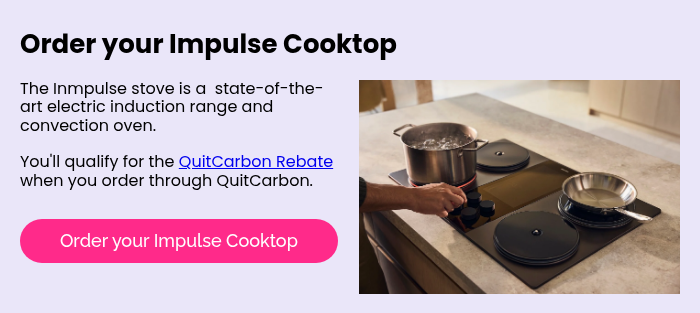Is the Copper Charlie or Impulse 120-volt, battery-assisted induction stove a good fit for my home?
New models of induction ranges with integrated batteries can be a good option for most homes. They make most sense if you have limited electrical capacity or running a new 240-volt circuit is particularly complicated.
Induction cooking is the way of the future. It's powerful, responsive, and precise – and it avoids much of the harmful indoor air pollution caused by gas stoves. Typically, induction stoves require a 40- to 60-amp, 240-volt circuit to the kitchen, and a minimum of 100 amps of main service to the home, to support the bursts of high power these appliances need when you're using them. These power requirements have posed a challenge for homes with limited electrical capacity or complications with running new circuits.

Fortunately, a few companies are tackling this constraint through an innovative solution: manufacturing induction ranges and cooktops that have an integrated battery that charges via a regular 120-volt outlet. The battery supplies the electrical power requirements of the stove. This "battery-assisted" or "battery-equipped" stove design avoids the need for costly electrical infrastructure upgrades and can make installation a snap.

Because of the battery, these cooktops and stoves may seem more expensive than their 240-volt counterparts. However, the battery-assisted devices often end up being cost-competitive, and not just because they don't require additional electrical work - the battery qualifies them for a 30% federal tax credit.
For example, a battery-powered range may cost $6,000*, while a comparable 240-volt non-battery equipped model is $2,500. After the federal tax credit, and the California Energy Smart Homes bonus rebate, the battery range is only $4,200. The 240-volt model will require a new circuit to the kitchen, which might cost $2,000 -- resulting in a total project cost of $4,500. So, at the end of the day, the battery range ends up being less!
| Battery-equipped 120-volt | Standard 240-volt | |
| Appliance cost* | $6,000 | $2,500 |
| Federal tax credit | -$1,800 | $0 |
| Electrical upgrades | $0 | $2,000 |
| CA Energy Smart Homes bonus | -$3,000 | $0 |
| Approximate Total | $1,200 | $4,500 |
* pricing for illustration purposes only
Additionally, battery-powered stoves are configured to charge while electricity is the cheapest and cleanest. For most homes, peak cooking hours are during the expensive and highest-carbon evening hours, so a battery-equipped stove will reduce your electricity bill too.
QuitCarbon is partnered with the two leading suppliers of battery-powered cooking appliances, one that is a combined range with cooktop and oven, and one that is a standalone cooktop.
QuitCarbon's free home evaluation service can help you determine what type of efficient electric cooking appliance is right for your home. Sign up and create a home profile today, or contact us for more details!
Charlie Stove from Copper Home

- The Charlie stove is a 30" range with induction cooktop and electric oven.
- Requirements: 30" between countertops for range space; a 120-volt outlet within 3 feet of the back of the range; 32"-wide doorways from the entrance of the house to the range location.
Interested in ordering the Charlie stove? Just click the button below to learn more and get started - and you'll qualify for an exclusive QuitCarbon Rebate when you order via the page below.
Concerned about replacing your gas range with a narrower induction range? Find easy ways to fill the gap in your kitchen.
Impulse Labs
- 30" or 36" induction cooktop (replaces an in-counter standalone cooktop)
- Requirements: See spec sheet for details on countertop cutout and required space below and above cooktop.

Interested in ordering the Impulse cooktop? Just click the button below to learn more and get started - and you'll qualify for an exclusive QuitCarbon Rebate when you order via the page below.


